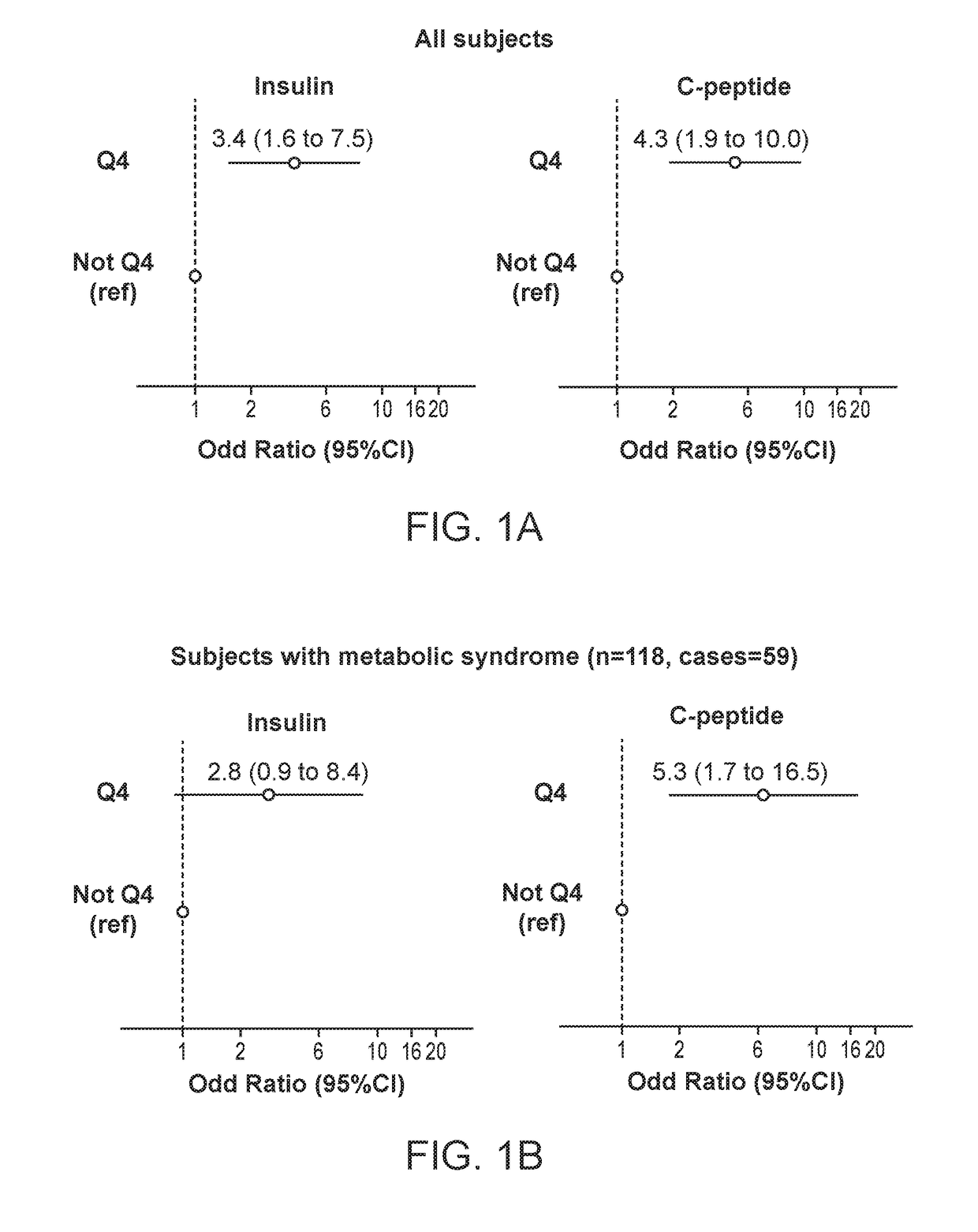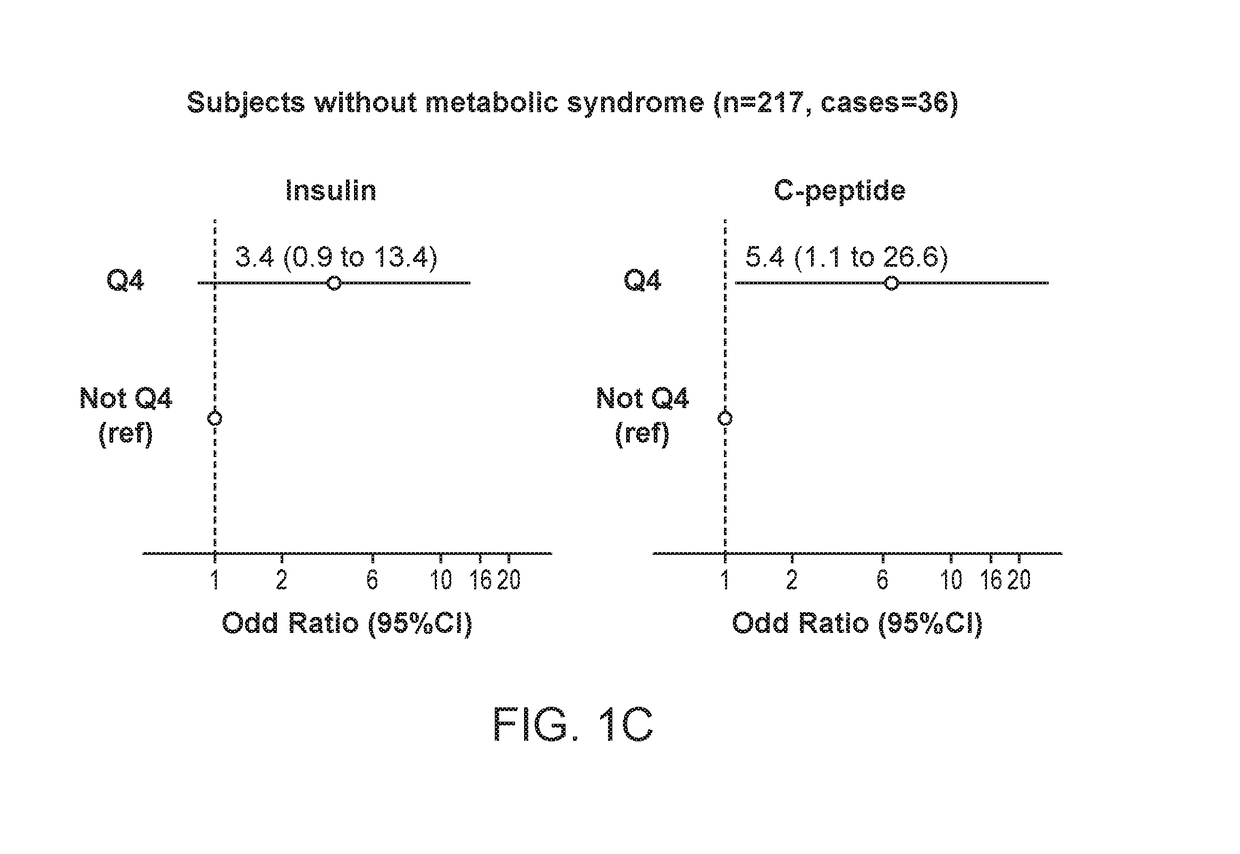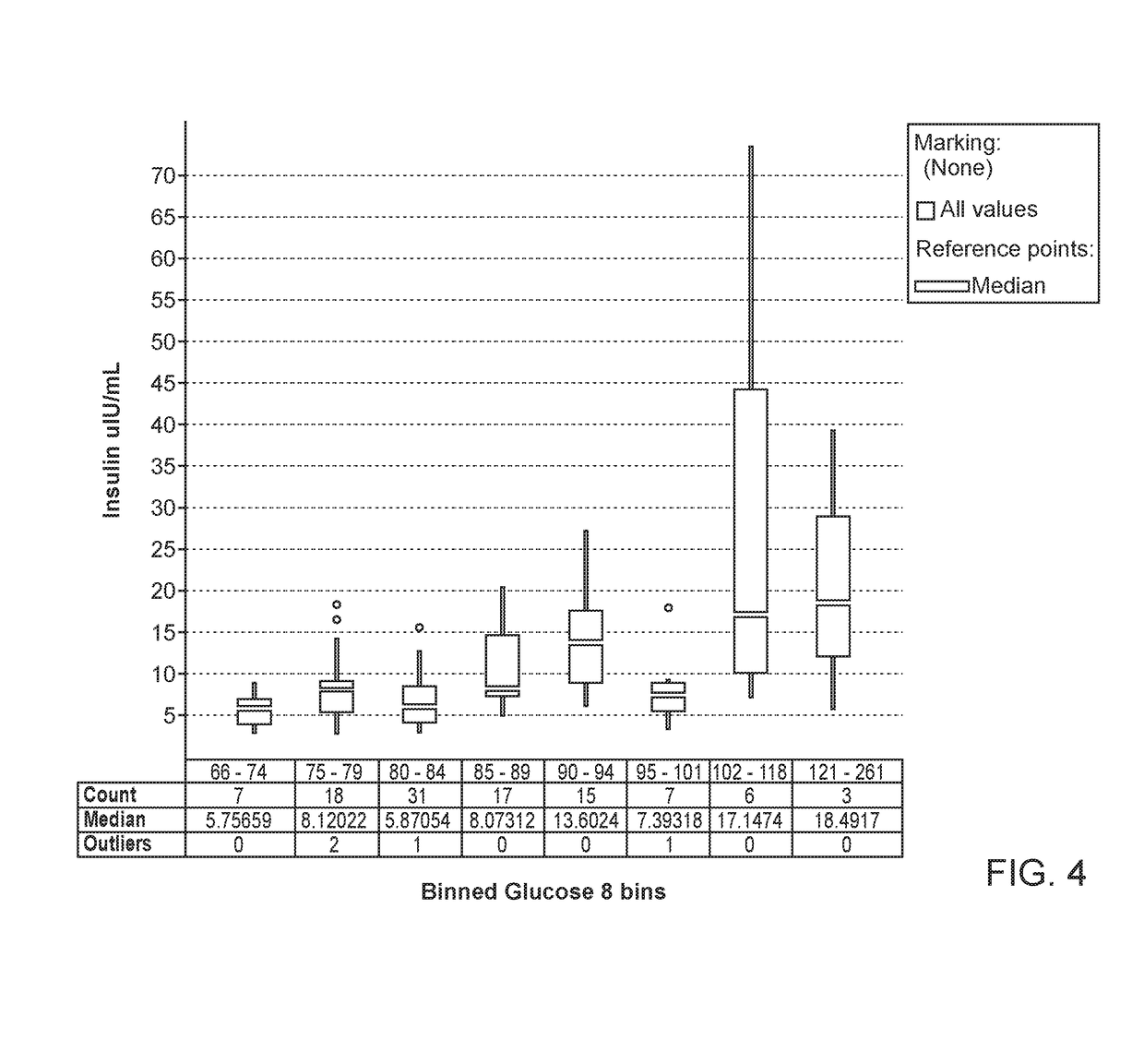Methods for quantitation of insulin and c-peptide
a technology of c-peptide and quantitation method, which is applied in the field of methods for quantitation of insulin and c-peptide, can solve the problems of not being able to establish a universally applicable numerical cut-off with which to identify apparently healthy individuals, and the clinical level of direct estimates of insulin-mediated glucose disposal is impractical, etc., to achieve the effect of diagnosing or prognosing insulin resistan
- Summary
- Abstract
- Description
- Claims
- Application Information
AI Technical Summary
Benefits of technology
Problems solved by technology
Method used
Image
Examples
example 1
ulin Resistance Study
[0167]Human subjects were apparently healthy, self-described non-Hispanic whites without a history of cardiovascular disease were. All individuals gave written informed consent to participate in the studies.
[0168]Subjects with fasting glucose ≥126 mg / dL or those taking glucose lowering medications or having a diagnosis of diabetes were excluded from the analysis.
[0169]Race and ethnicity were determined during a medical history. Weight and height were measured while individuals were wearing light clothing and no shoes. Body mass index was calculated by dividing weight in kilograms by height metered squared. Blood pressure was measured using an automatic blood pressure recorder. Prior to these measurements, subjects were seated quietly for 5 minutes in a chair with feet on the floor and arm supported at heart level. Using an appropriately sized cuff, 3 blood pressure readings were taken at 1-minute intervals and averaged. Metabolic syndrome was present if 3 of the...
example 2
nd C-Peptide Measurement
[0174]We used SSPG to assess IR in 632 non-Hispanic white participants who were non-diabetic (FG<125 mg / dL and without a diagnosis of diabetes). IR was defined as the top tertile of SSPG in this population (≥201 mg / dL).
[0175]Insulin and C-peptide were assessed by a multiplexed tandem mass spectrometry assay.
[0176]Serum was delipidated and then insulin and C-peptide were immunocaptured using antibodies immobilized on magnetic beads. The beads were washed and the peptides were eluted from the beads with acidified acetonitrile in water. Trizma base was added to enhance stability of the peptides. The processes of calibrator preparation, internal standard addition, delipidation, bead deposition, immunocapture, washing and eluting the peptides from the beads were automated, using a Hamilton STAR® robotic liquid handler.
[0177]The elution plate was transferred to a ThermoFisher TurboFlow Aria TX4 HTLC system. The sample was injected onto a hydrophilic / lipophilic bala...
example 3
ay and Inter-Assay Precision
[0180]The intra-assay precision is defined as the reproducibility of a measurement within an assay and was generated from assaying 5 replicates from QCL, QCM and QCH. The coefficient of variation (CV) for 5 replicates of a sample was used to determine if the reproducibility is acceptable (≤15%). Statistics performed on the results for a run determined that the reproducibility (CV) for the QC's ranged from 6.2 to 11.5% for insulin and 5.1 to 6.3% C-peptide (Table 2). Intra-assay precision can also be calculated across all assays (see 930TP5319: Assay Validation Calculator). For insulin within run CV ranged from 4.7 to 9.6% and C-peptide within run CVs ranged from 4.7 to 7.0%.
[0181]The inter-assay variation is defined as the reproducibility of measurements between assays. QCL, QCM and QCH were evaluated over 5 days. The inter-assay variation (% CV) for the pools ranged from 7.3-11.3% for insulin and 6.2 to 9.0% for C-peptide. All QC pools for insulin and C-...
PUM
| Property | Measurement | Unit |
|---|---|---|
| concentration | aaaaa | aaaaa |
| concentration | aaaaa | aaaaa |
| concentration | aaaaa | aaaaa |
Abstract
Description
Claims
Application Information
 Login to View More
Login to View More - R&D
- Intellectual Property
- Life Sciences
- Materials
- Tech Scout
- Unparalleled Data Quality
- Higher Quality Content
- 60% Fewer Hallucinations
Browse by: Latest US Patents, China's latest patents, Technical Efficacy Thesaurus, Application Domain, Technology Topic, Popular Technical Reports.
© 2025 PatSnap. All rights reserved.Legal|Privacy policy|Modern Slavery Act Transparency Statement|Sitemap|About US| Contact US: help@patsnap.com



